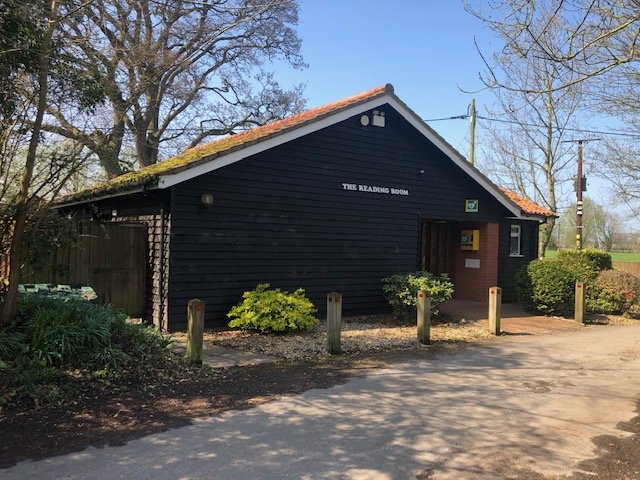Burgh Reading Room - History & Transformation
From wooden hut in the 1920’s to modern village social meeting space 1999

Rotting, wooden shed…
This is the story of how the Reading Room was transformed from a rotting, wooden shed to a purpose-built community facility for villagers to use and enjoy.
It was written by Mr Jimmy Hagg, then chairman of the Burgh Reading Room Society, as a newsletter in October 2004, on the approach to the fifth anniversary of the newly-built Reading Room.
How it started…
On 5 September 1995 a meeting was held at St Mary’s Church to discuss the possibility of repair, refurbishment and extending the existing building.
Subsequently, when the situation regarding available grants was obtained it was realised that a new building was both realistic and the most desirable option. An architect was appointed, planning permission and building regulations approval obtained. Tenders for the building construction were received and building commenced in early 1999.
1999 Open for business!
The new Reading Room was completed and officially opened by Mr Keith Skipper on 20th November 1999. Funding for the project had come from the National Lottery 21st Century Halls for England Fund, Norfolk Rural Community Council, Broadland District Council, Lloyds TSB, Nationwide Anglia, and the Garfield Weston Foundation. Most of remainder of the money was the result of fund raising.
A room fit for heroes
In rural Norfolk, from the mid-19th to the mid-20th century, there were 160 village reading rooms. According to a 2009 study by the University of East Anglia, in Norwich, many started out as “alternatives to the public house for the working classes, although they tended to appeal more to the lower middle classes, and membership was mostly restricted to males.”
In the 20th century, as other diversions appeared and the countryside became more “democratised”, reading rooms gradually declined. They were, however, an important part of village life and have left interesting evidence of former lifestyles and attitudes.
In Burgh, the original Reading Room was an army hut donated by the War Office and erected on the site soon after 1918. Its purpose was to provide recreational facilities for men returning from the Great War.
The land on which the Burgh hut was erected in Church Lane, was rented to the trustees for the sum of one shilling (5p or worth the equivalent of about £3 today) a year by Mr Charles Grix.
Money was made available to the parish for the provision of facilities such as furnishings, a gramophone, dartboard, shelving, etc and daily newspapers. The parish also provided items such as a piano, dominoes and games.
Subsequently the room was used for wider purposes over a period of years including regular whist drives, socials, family parties, wedding receptions, christenings, youth club, polling station for local and national elections, concerts, mobile library, jumble sales and other fund raising events.
However, by the mid-eighties it was rarely used due to its general state of disrepair, lack of toilet accommodation, and other facilities regarded as necessities at the time.
Many of the items in the fitting out, such as cooker, fridge-freezer, etc were generously donated. The bar was constructed by ‘our own in-house’ joinery expert, and the front is faced with reclaimed timbers, from the floor of the old Reading Room building.
It had taken more than four years of seemingly never-ending meetings, avalanches of paper, and sometimes very difficult, frustrating bureaucracy.
As a condition of obtaining some of the grants it was necessary for us to register as a charity, via the Government Charity Commissioners. This in itself was a very lengthy and complicated procedure. [The original ‘Deed of Gift’ of the land was given to the trustees by Vivienne Mary Grix in 1986. In order to gain charity status the deed was modified in 1995 to meet the Charity Commissioners requirements.]
Eventually we became Licensed Charity No. 1066626. As a charity we have to abide by certain extra rules, and as a result the following distinctions apply:
The Burgh Reading Room Society is managed by the Reading Room management committee.
The Burgh Reading Room Social Club is one of the hirers/users of the Reading Room, and has its own committee and officers.
Trustees of the Burgh Reading Room are responsible for ensuring that the premises are utilized and managed properly. (J. Hagg 2004)
By the mid 1990’s the original wooden Reading Room was in a poor state, rotting with broken windows, left hand picture is at from the back and on the right this is how it looked from the lane…


